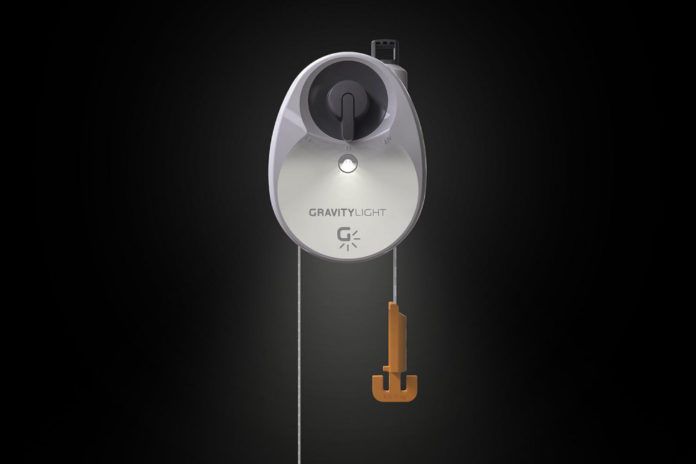Almost 2 billion people light their homes using kerosene and other biomass fuels. Although kerosene is the most commonly available fuel. More than 1.1 billion people do not have another choice but to use this dangerous form of lighting. To create lighting, kerosene is usually put in a glass bottle or a tin can and lit using a wick.
But it also causes poisoning in the developing world. Using kerosene can cause many health problems. For example, respiratory diseases, unintentional ingestion problems, and severe skin burns.
To find a solution, Kenyan engineers have developed Gravity Light. Gravity Light is ready when you need it. It generates self-sustainable energy with no charging required. If you think it uses solar energy, then no. It even does not use solar power to charge itself. This means that there are no running costs required.
This gravity-powered lamp uses a bag filled with rocks or earth attached to a cord, which slowly descends, similar to the weight drive in a cuckoo clock.
Additionally, it is robust and reliable. It consistently provides light five times brighter than a Kerosene lamp.
Engineers primarily analyzed existing lighting solutions to design the Gravity Light, with the main category being solar-powered lights. However, their component batteries comprised a third of the product’s cost and PV panels.
How Does Gravity Light Work?
The system uses a pulley mechanism and a ballast bag hanging from the lamp. The ballast bag can hold up to 9 kg of rock, sand, or soil. Gravity lights work on a principle similar to that of pendulum clocks, which are operated with the help of weights. The converted energy then generates light.
Specifications of Gravity Light:
- Power Output (12.5kg Load)
- One setting ~ 0.075W
- Light Output ~ 16 lumens
- LED efficiency (Lumens / Watt) 208 to 212 lm/W
- Environmental conditions Operating: Minus 5 ̊C – plus 40 ̊C
- Load Weight Min: 8kg (17.6 lb)
- Max 12.5kg (27.5 lb)
- Run Time Per Cycle 20 minutes (based on a 1.8m or 6 feet drop distance)
- Storage: Minus 15 ̊C – plus 80 ̊C
Jim Reeves, co-Founder of Gravity Light, said, “Our original crowdfunding campaign was set up to mass produce the first GavityLight production prototype (GL01). The test it in off-grid communities – over a thousand households in 26 different countries. We used the insights gathered from these field trials to improve the design and develop the first commercial model of GravityLight (GL02). We launched our second crowdfunding campaign, with the objective of setting up the GL02 assembly plant in Kenya.”
By doing this, engineers wanted to create local jobs, skills, and livelihoods in the heart of the communities that will be using GravityLight.
